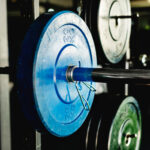Exercises You Should Be Doing: 1-Arm Low Cable Row
Point to someone with a monster bench press, deadlift, or squat and I’ll point to someone who has monster lats.
They’re a massive muscle with an expansive cross-sectional area spanning the entire (upper) backside. Don’t take my word for it, just peruse any anatomy book and notice all the attachment points: vertebral attachments (T6 to the sacrum), ribs, pelvis, scapula (<– not everyone), and humerus.
Aesthetically there’s no question having a big set of lats will win you a few bodybuilding shows and more than a few glances from onlookers.
However there’s very little talk on how having big lats – or, more to the point, having the ability to activate the lats to increase tension and stabilize the spine – can help improve performance in many of the big lifts.
One drill we’ve been using at Cressey Sports Performance recently to help in this regard is the 1-Arm Low Cable Row.
1-Arm Low Cable Row
Who Did I Steal It From: giving credit where it’s due, CSP coaches Greg Robins and Tony Bonvechio were the ones who started tinkering with the standard Standing Cable Row we use often at the facility and lowered the positioning of the (cable) arm to better increase activation of the lat.
What Does It Do: I just told you! It activates the lats to a higher degree. GOSH. It’s like you don’t even listen to me anymore.
You know what, stop. Don’t “babe, I’m sorry. I didn’t mean it” me. You know what you did. You know I don’t like it. And…wait, what’s that? You found a kick-ass, fan made, fake Boba Fett movie trailer?
What were we talking about again? Right, the low cable row.
Key Coaching Cues: Set up as you would a normal standing cable row, albeit in this case you’ll set the “arm” at a lower angle in relation to the body.
From there all the same rules apply: athletic stance, feet shoulder width apart, chest up, don’t allow shoulder to “roll” forward, etc. Think about rowing/pulling your elbow to your hip (elbow still shouldn’t go past the midline) and pause for a 1-3s count. You should definitely feel a difference with the lat turning on to a higher degree.
If you don’t, you’re weird….;o)
NOTE: I also like to cue people to start with a pronated (overhand) grip and as they “row,” rotate the handle to a neutral position.
Return back to starting position, but be sure to allow the scapulae to protract forward around the ribcage. You don’t want to “glue” it down the entire time.
While I wouldn’t go out of my way to use this drill with overhead athletes (who are generally stuck in extension and overly lat dominate, which affects their ability to upwardly rotate the scapulae), this is an awesome drill to use to help people learn to “engage” their lats to a higher degree, which in turn translates very well to better performance with the “Big 3.”
It’s a subtle tweak, but something worth giving a try.



Comments for This Entry
ronellsmith
This is a fave, Tony. I ALWAYS feel it the next day, especially if it's placed as a low rep/higher weight option.September 2, 2015 at 2:22 pm |
continental hospital
The photo was really good he had a great body it is tough to maintain a body like that.If we regularly do exercise we are free from fat and cholesterol.hyderabad hospitalsSeptember 5, 2015 at 5:38 am |
The Weeks Best Fitness Articles For Golfers – 6/9/15 | Stronger Golf
[…] Exercises you should be doing: 1-arm low cable row, Tony Gentilcore […]September 6, 2015 at 5:04 am |
Shane Mclean
Don't worry Tony, I'll listen to you buddy :)September 6, 2015 at 9:27 am |
dr vikram sharma
Hai great body tony, exercises give you results that you can see and feel Strong.March 27, 2019 at 3:26 am |